徐悲鸿,江苏宜兴屺亭镇人也,生于光绪二十一年六月初九,殁于癸巳年八月初六。悲鸿家世清寒,父徐达章,工诗文书画,尤精篆刻;母鲁氏,质朴贞良。悲鸿少随父学诗书画印,早承家学,奠传统文化之根基。
Xu Beihong,, hailed from Qiting Town, Yixing, Jiangsu. He was born on the ninth day of the sixth month in the twenty-first year of Emperor Guangxu’s reign and passed away on the sixth day of the eighth month in the year of Guisi. Beihong’s family was of humble origins. His father, Xu Dazhang, was skilled in poetry, calligraphy, and painting, particularly excelling in seal carving; his mother, Madam Lu, was simple and virtuous. From a young age, Beihong followed his father in studying poetry, calligraphy, painting, and seal carving, thus laying a solid foundation in traditional culture.
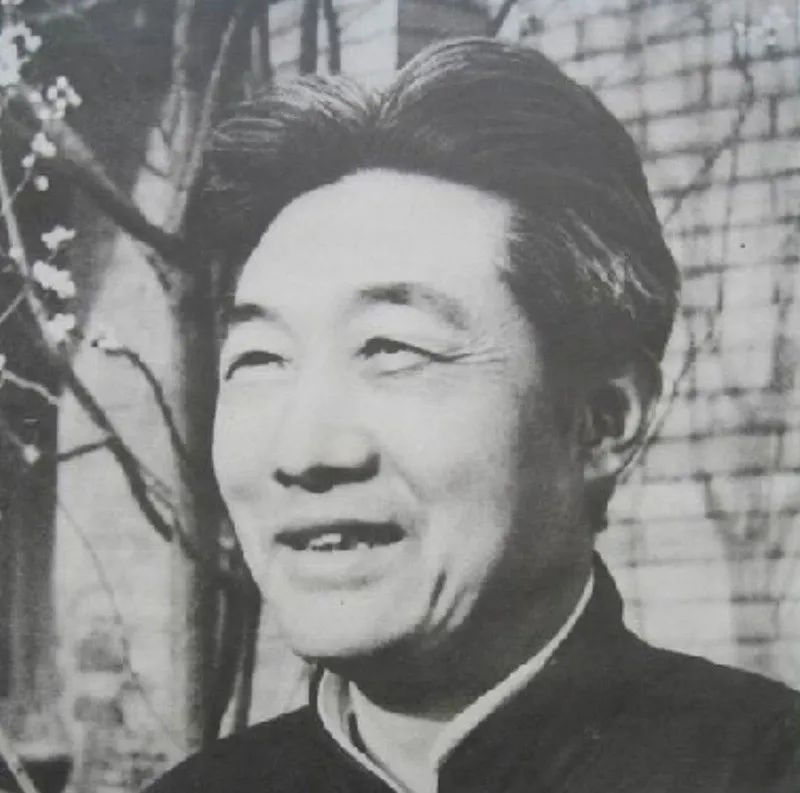
民国八年,悲鸿赴法,师事油画素描。然于西洋艺林之游,心系中华丹青,思虑美术之新价值与新内涵。其识见独到,善辩“传统”与“创新”之道。悲鸿之艺肇自华夏,识国画之源流,究其妙理。批陈守旧之弊,发宏传统之精华,导画坛之目光,回溯唐宋之广袤意境与恢宏气象,承中国画为东方艺术之至宝,赓续其体系性价值。
徐悲鸿以画马寄情志,寓其性灵与理想。其所绘骏马,除《九方皋》之逸骏有绳辔,他多作无鞍无绳之态,表现自由自在,暗合黎庶向往自由之志。随祖国命运之沉浮,悲鸿于不同世局描绘骏马之形态亦有变迁。解放前所绘之马,或驰奔,或驻足,或企盼;及至神州重光,民众重生,则其马奔腾欢跃,欣欣然跃然纸上,显其强烈爱憎。
In the eighth year of the Republic, Beihong went to France to study oil painting and sketching. During his sojourn in Western art circles, he remained deeply connected to Chinese painting, contemplating new values and meanings in art. His unique insights enabled him to skillfully debate the dialectic of "tradition" and "innovation." Beihong’s artistry began with Chinese painting, understanding its history and essence. He criticized the limitations of conservative thought and content, while promoting the quintessence of traditional Chinese art, guiding the art world’s gaze back to the expansive and majestic spirit of Tang and Song dynasty paintings, affirming the systemic value of Chinese painting as a representative of Eastern art.
Xu Beihong expressed his emotions and ideals through painting horses. His horses, except for the one in "Jiu Fang Gao," which had a bridle, were typically depicted without saddle or bridle, symbolizing freedom and reflecting the people's love for liberty. As the fate of the nation fluctuated, Beihong’s portrayal of horses evolved with the times. Horses painted before the liberation were either galloping, standing still, or yearning; after the liberation, with the rejuvenation of the nation and its people, his horses were depicted as galloping and leaping joyously, vividly expressing the artist’s strong emotions.
艺之美,乃艺者之情感与客观之形象交融流露也。悲鸿早年画马题辞有云:“直须此夜非长夜,漠漠穷荒有尽头。”又有云:“所向无空调,聊堪记死生。”此非唯写旧世之幽暗,亦寄望光明之心。归国后,有奔马题辞曰:“山河百战归民主,除尽崎岖大道平。”此则欣贺新中国之诞生。悲鸿以马托人,借物抒怀,抒其爱国之情怀。
徐悲鸿于绘事,尚现实主义,崇写实之风,倡师法造化。善素描、油画、国画,三者并擅。其素描多人物肖像,造型精简而准确,尤重线面之合;油画则长人物风景,涵爱国人道之思;国画融西法于中艺,独具一格。
悲鸿之素描,融中画之线描与西洋之明暗,显造型之神韵。油画、国画,取材华夏史传,蕴涵国魂。二十世纪之际,悲鸿倡师法自然,推重宋元,复兴人物画之精髓。其于丹青绘事,笔墨与造型相谐,开宗立派,发扬时代之新貌,声震画坛,远播影响。
The beauty of art lies in the artist’s subjective emotions intermingling with objective imagery. Early in his career, Beihong inscribed on a painting of horses: "This night must not be a long night; the vast wilderness will eventually come to an end." Another inscription reads: "The way ahead is clear, worth remembering life and death." These inscriptions not only reflected the darkness of the old society but also conveyed a yearning for light. Upon his return to New China, one of his paintings of galloping horses was inscribed with: "The mountains and rivers return to the people after a hundred battles, removing all obstacles for a smooth path." This was a celebration of the birth of New China. Beihong used horses to symbolize people and express his patriotic sentiments through his art.
In his artistic pursuits, Xu Beihong advocated realism, emphasizing the importance of accurate representation and the study of nature. He excelled in sketching, oil painting, and traditional Chinese painting. His sketches, often of people and portraits, were precise and accurate, emphasizing the combination of line and form; his oil paintings, focusing on figures and landscapes, conveyed themes of patriotism and humanitarianism; his Chinese paintings uniquely combined Western techniques with traditional Chinese art.
Beihong’s sketches skillfully integrated the "line drawing" techniques of Chinese painting with the "chiaroscuro" of Western art, showcasing the spirit of Chinese visual arts. In his thematic creations of oil and Chinese paintings, he often chose subjects from Chinese history and culture, narrating stories imbued with Chinese spirit. In the development of Chinese painting in the twentieth century, he advocated "learning from nature," highly valuing the traditions of the Song and Yuan dynasties, and emphasizing the revival of the essence of figure painting from those periods. In his creation of Chinese paintings and figure paintings, he achieved a harmonious unity of brushwork and form, establishing a distinctive style that reflected the new era of Chinese painting, leaving a profound influence on the art world.


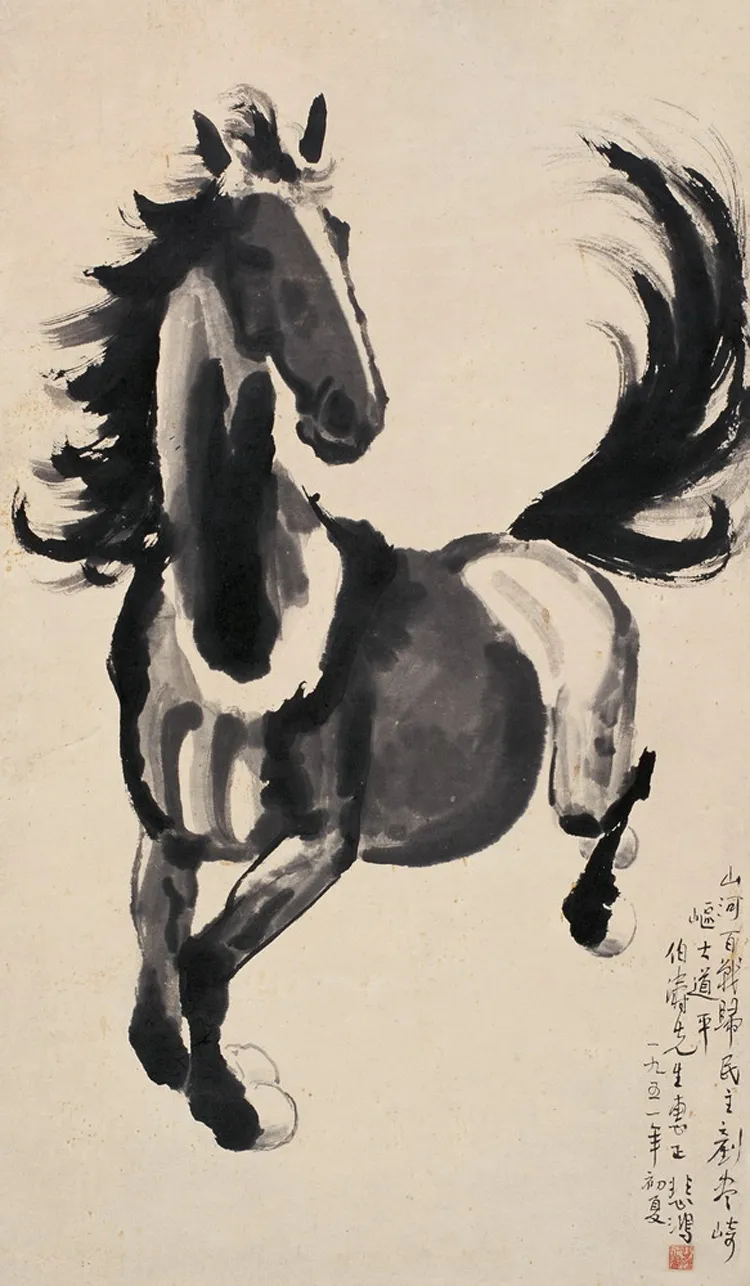
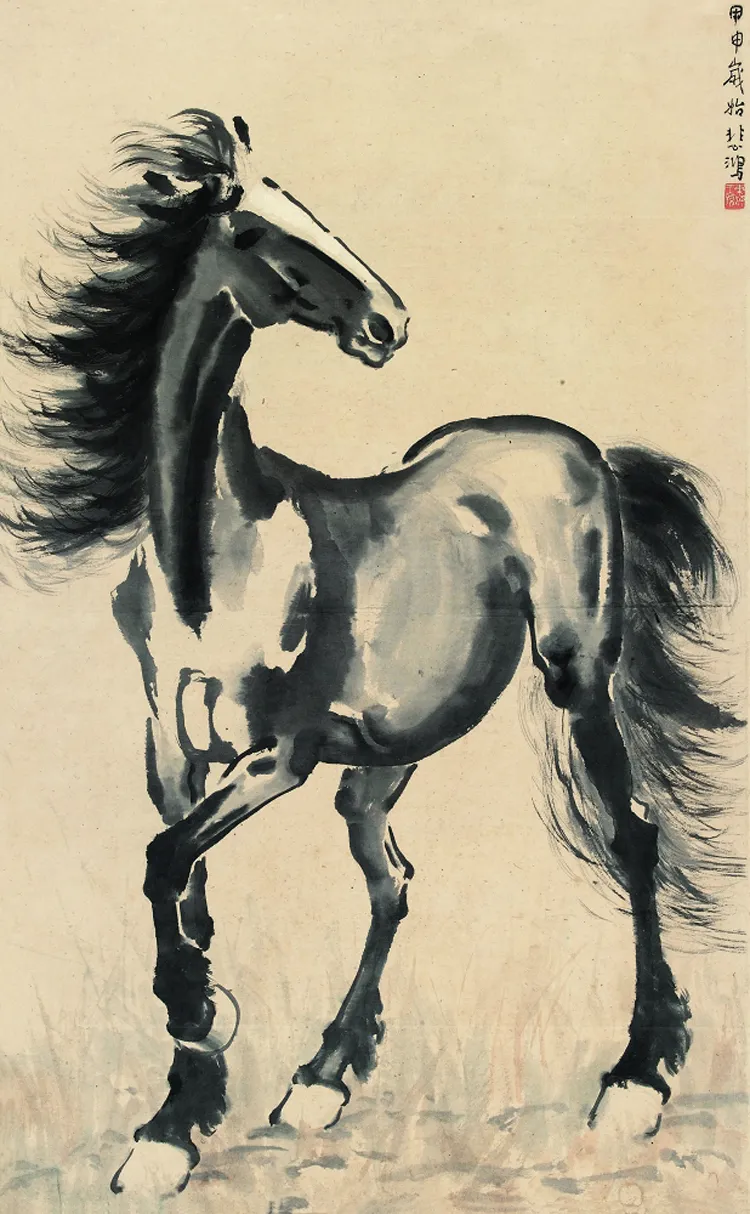
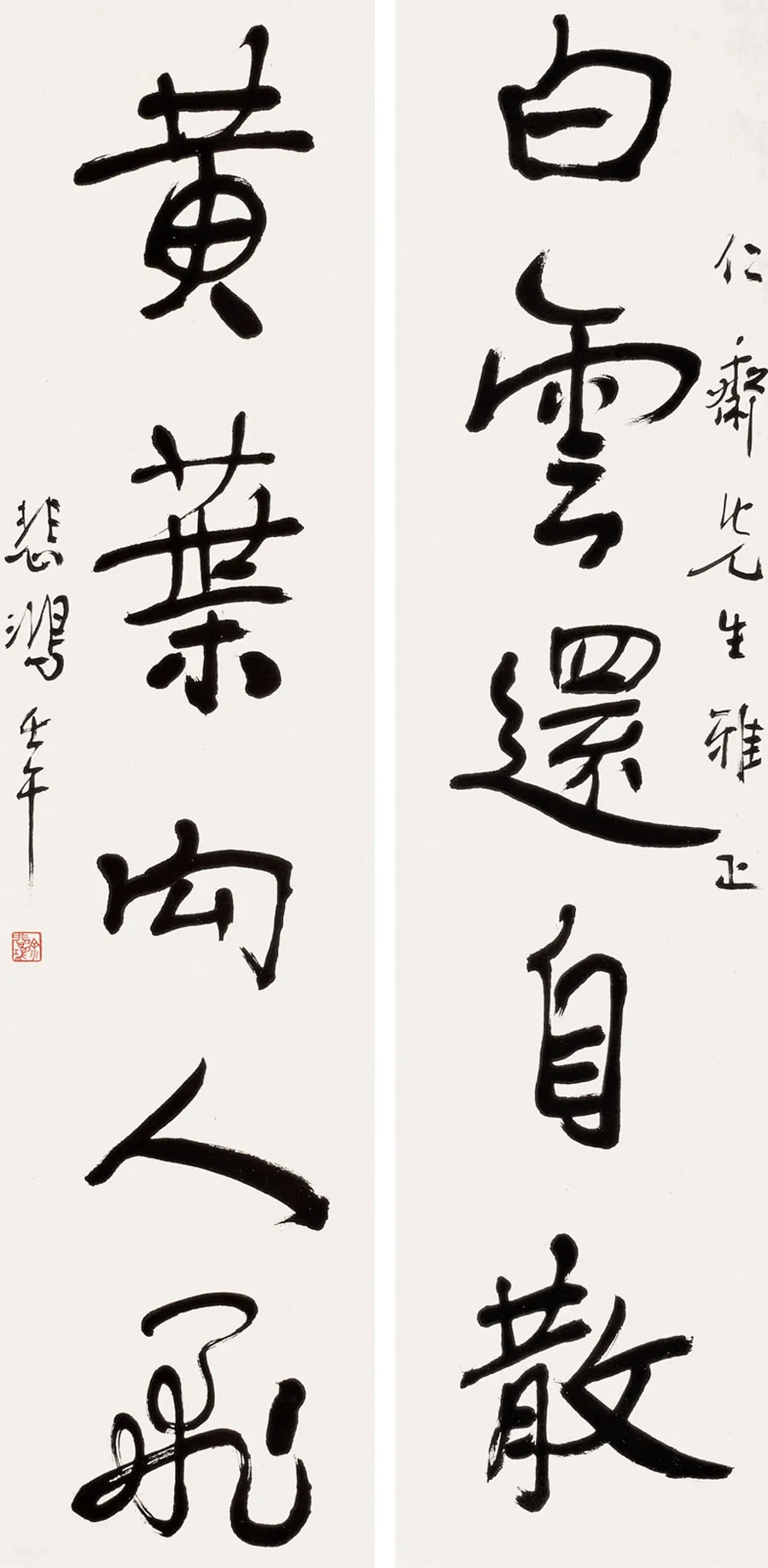
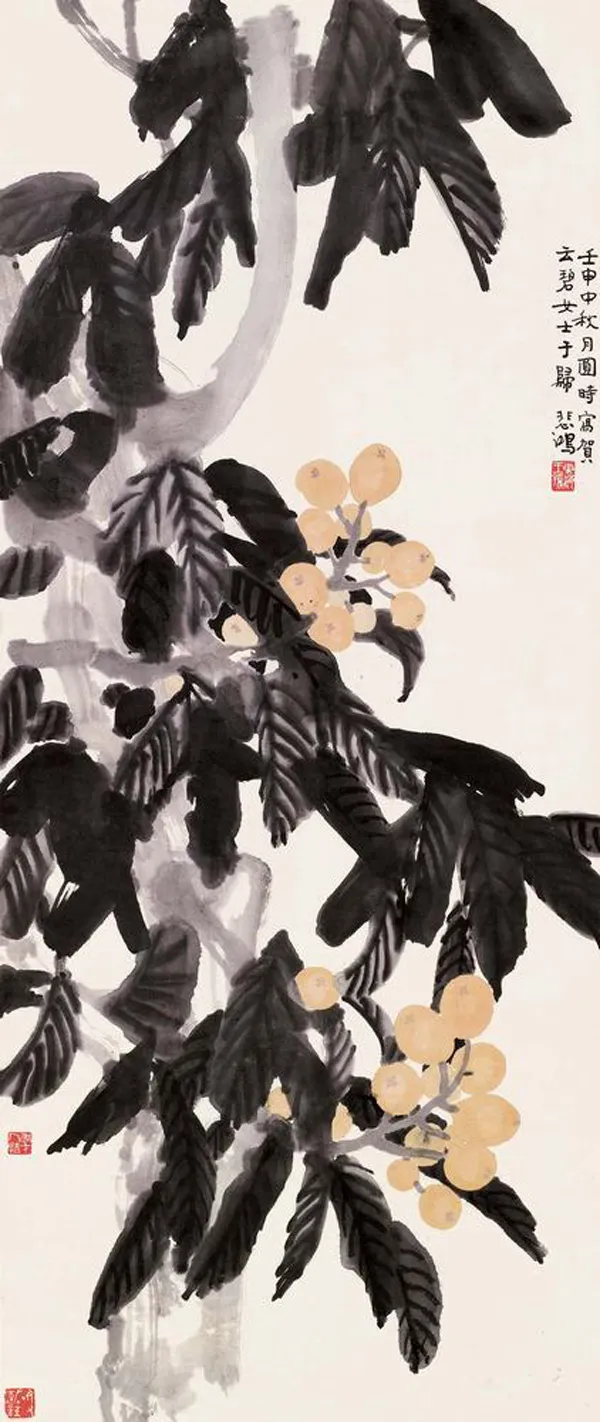
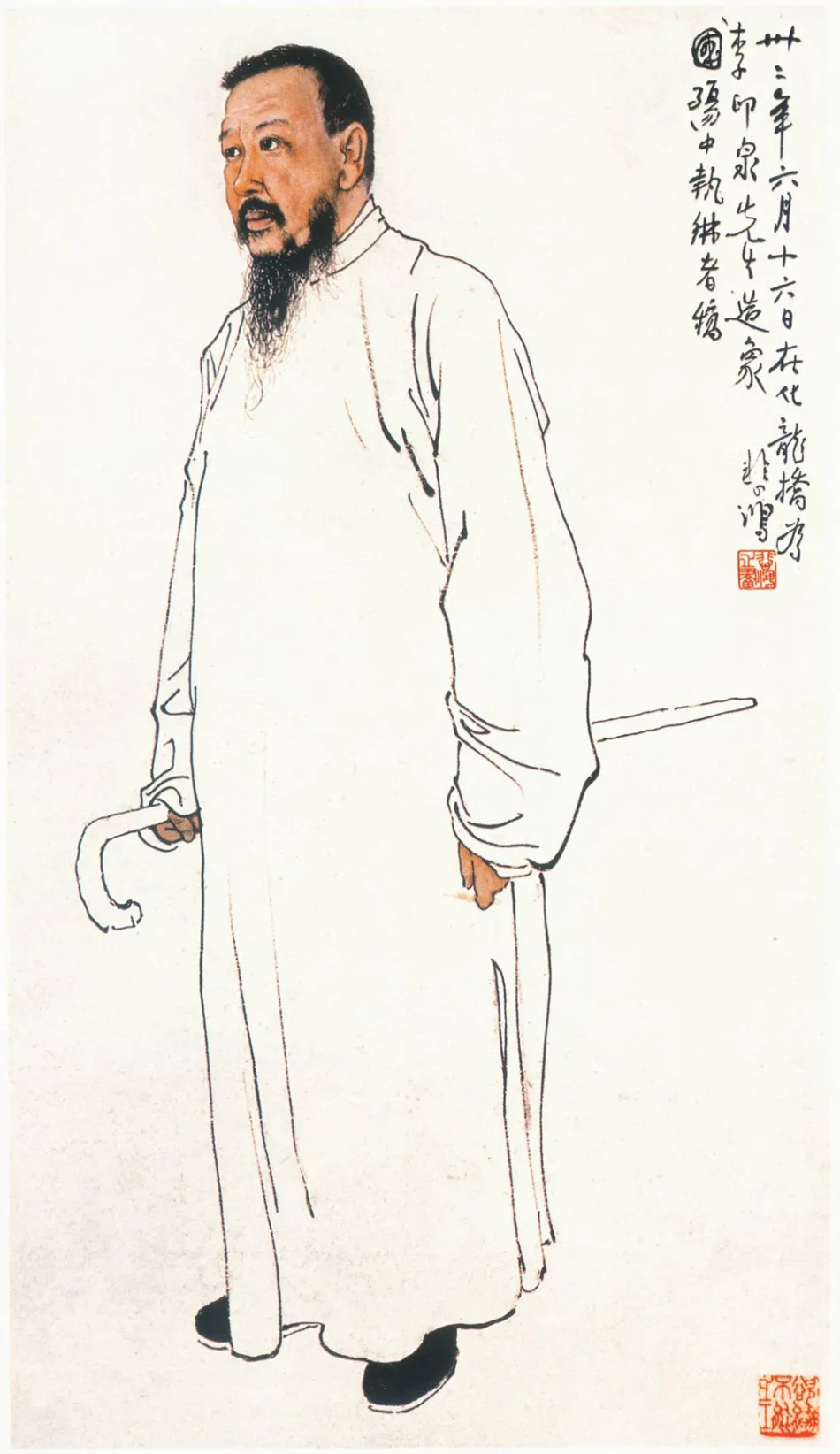

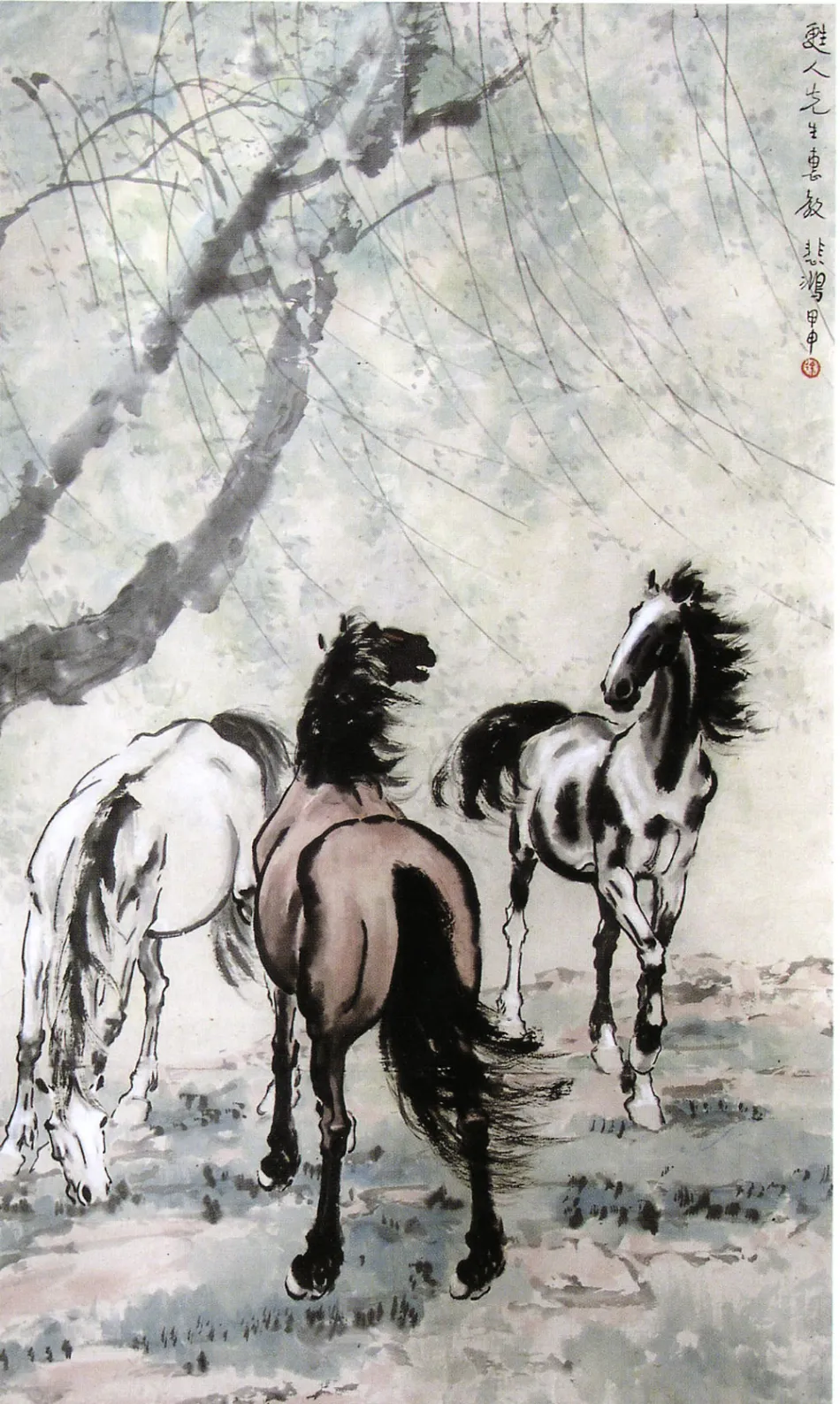
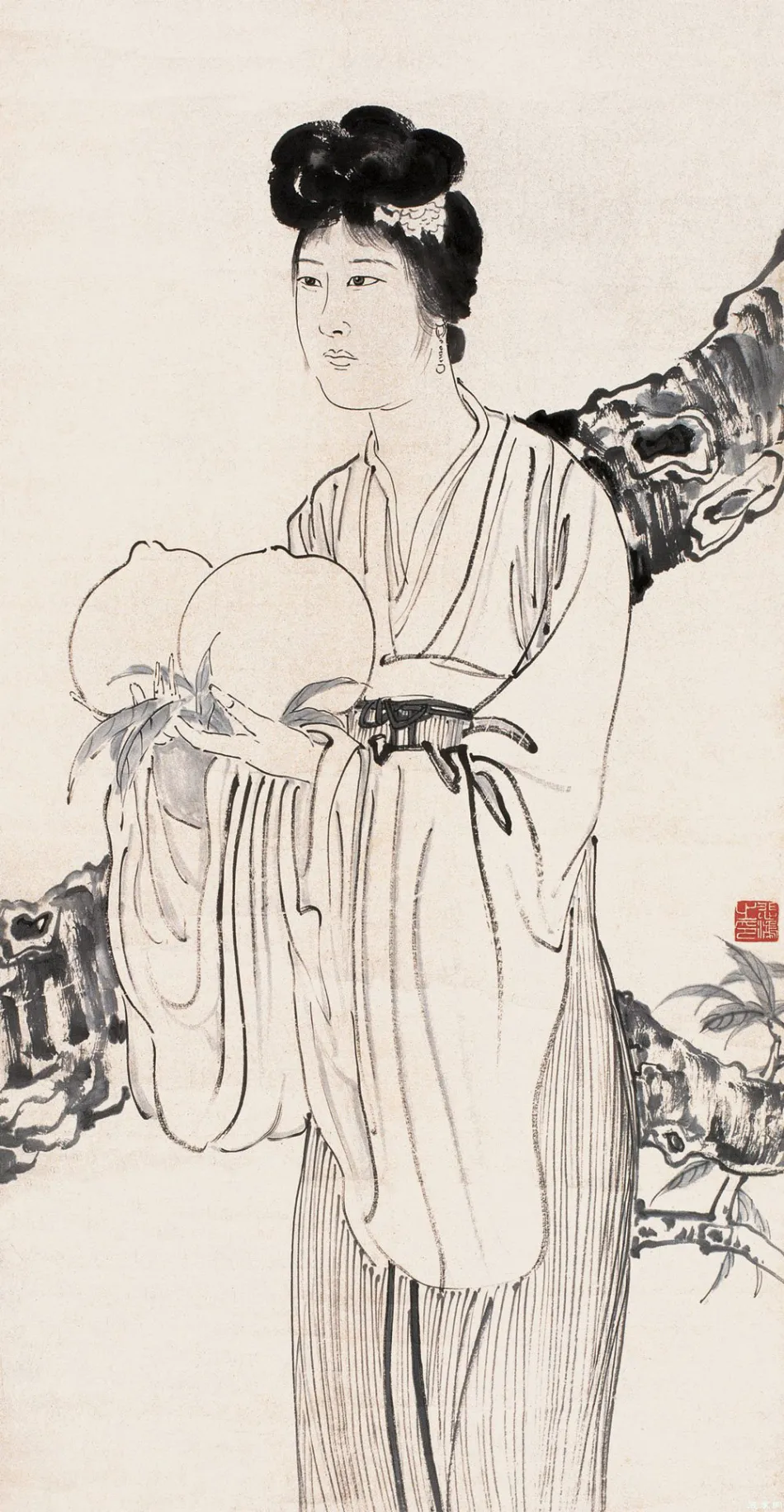
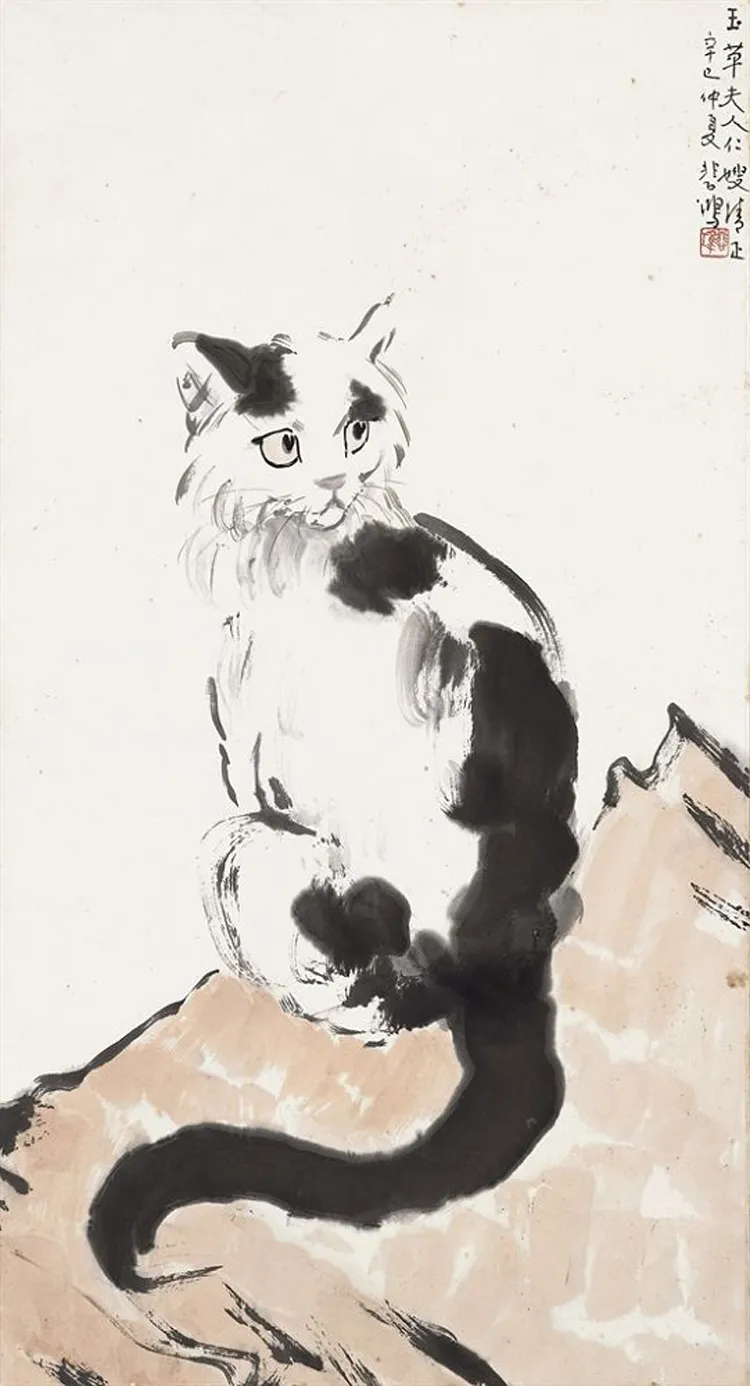
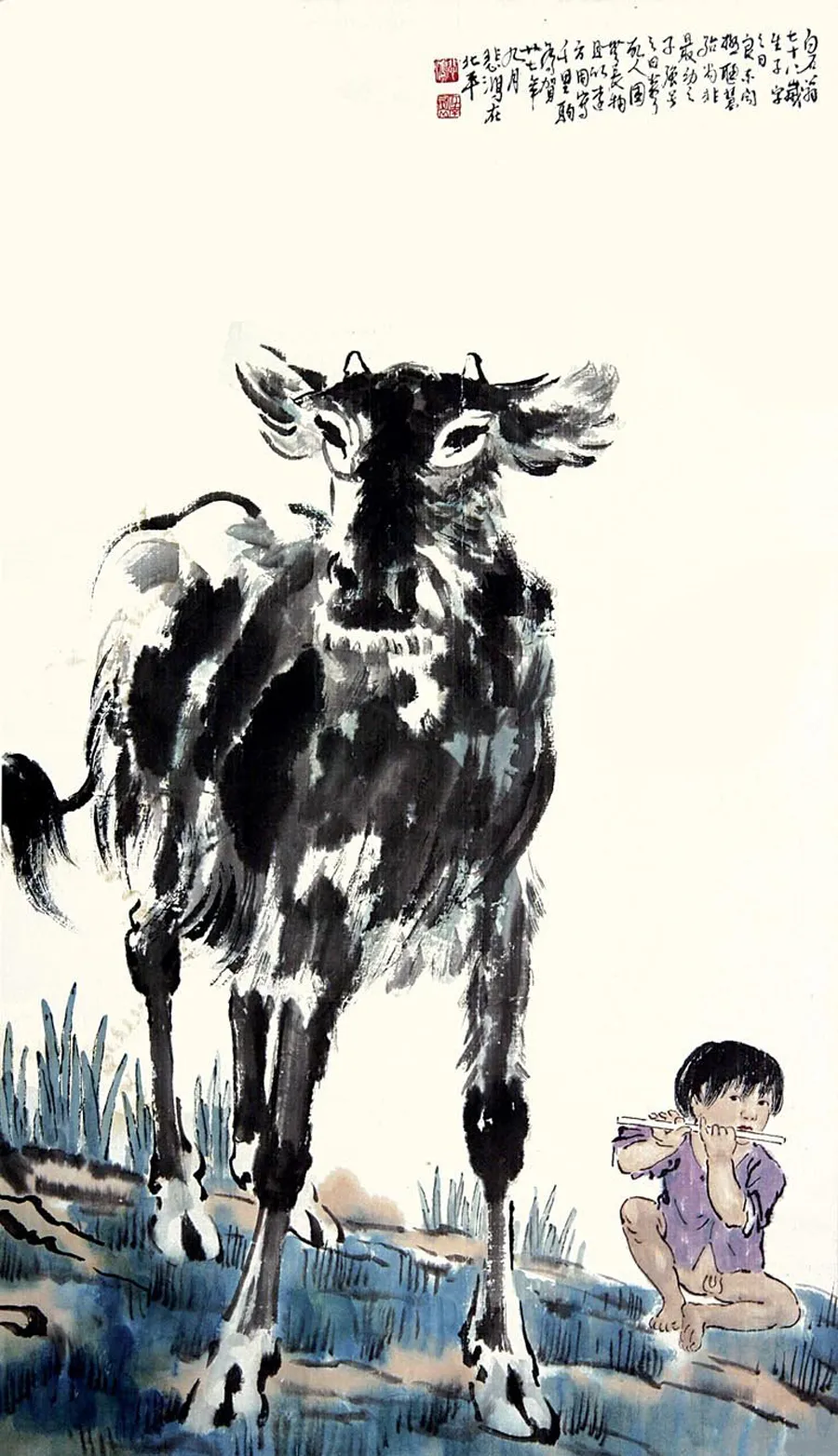
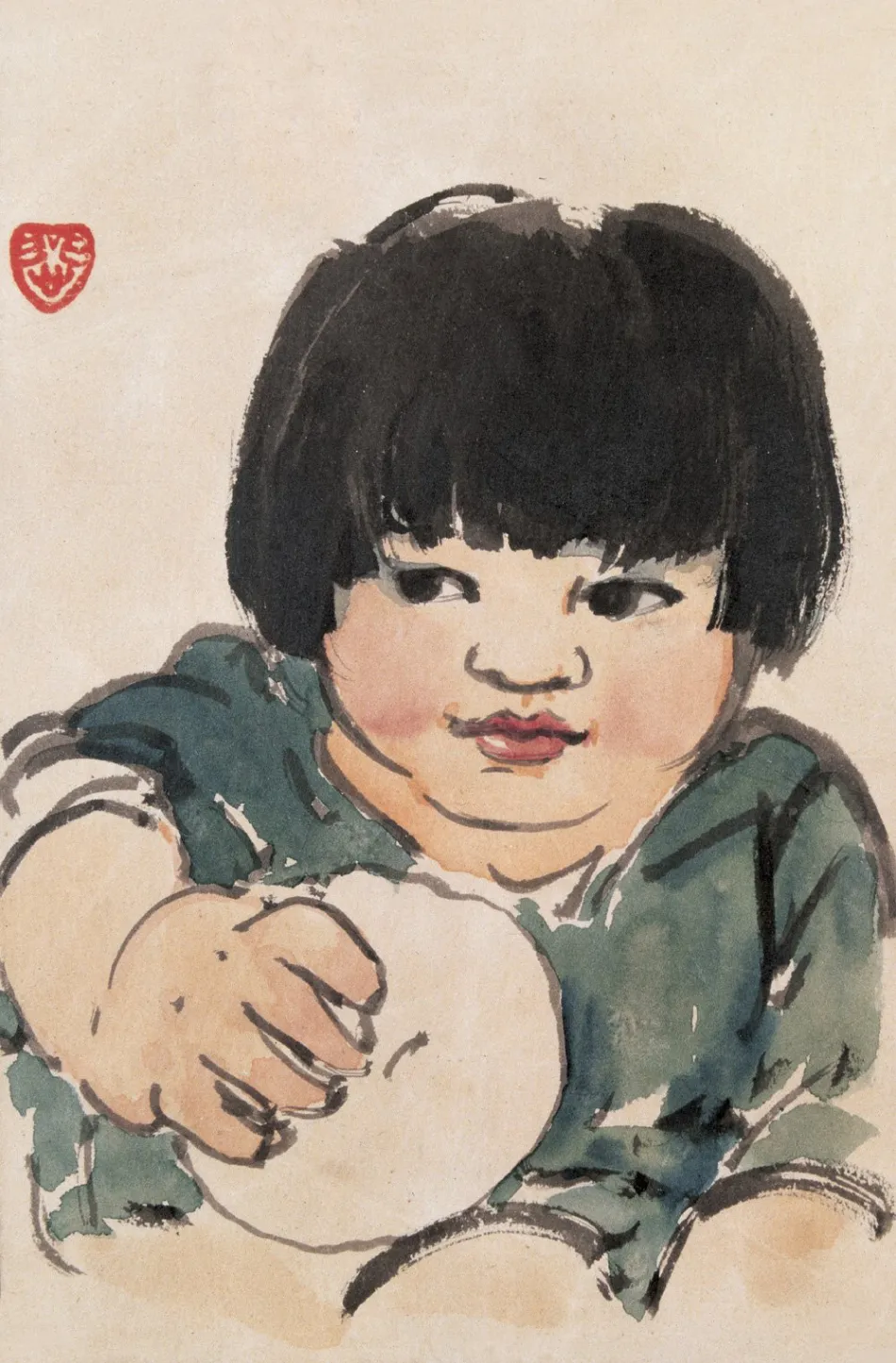

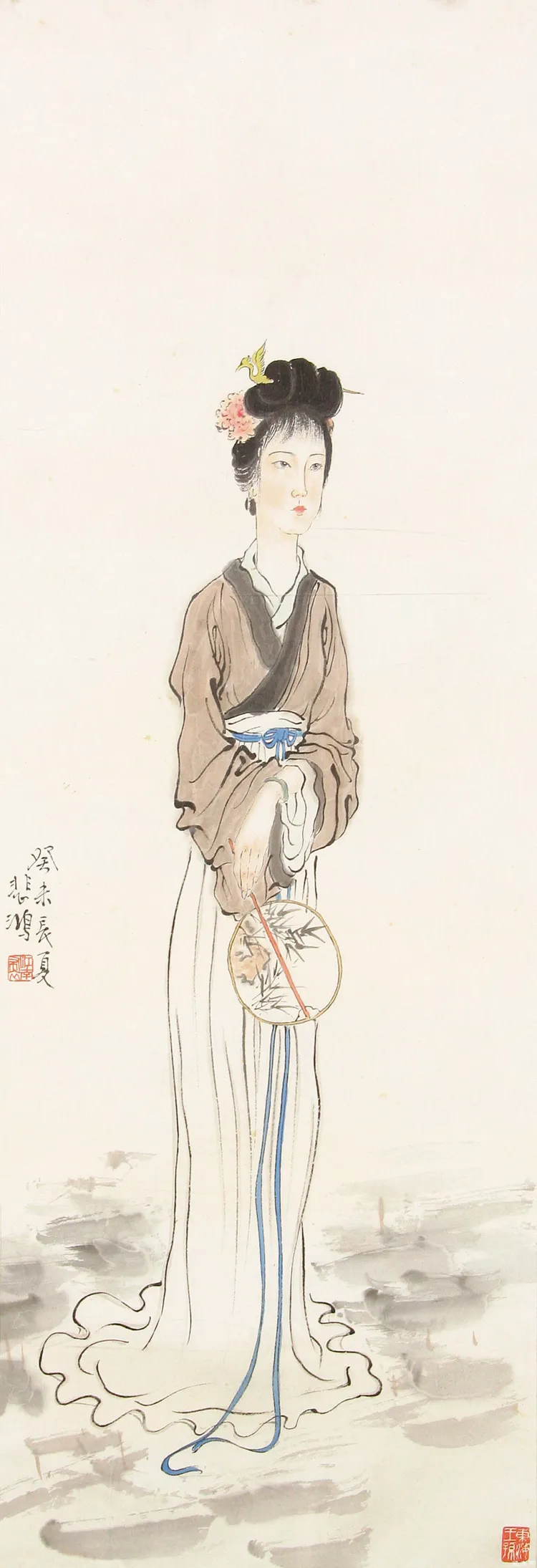
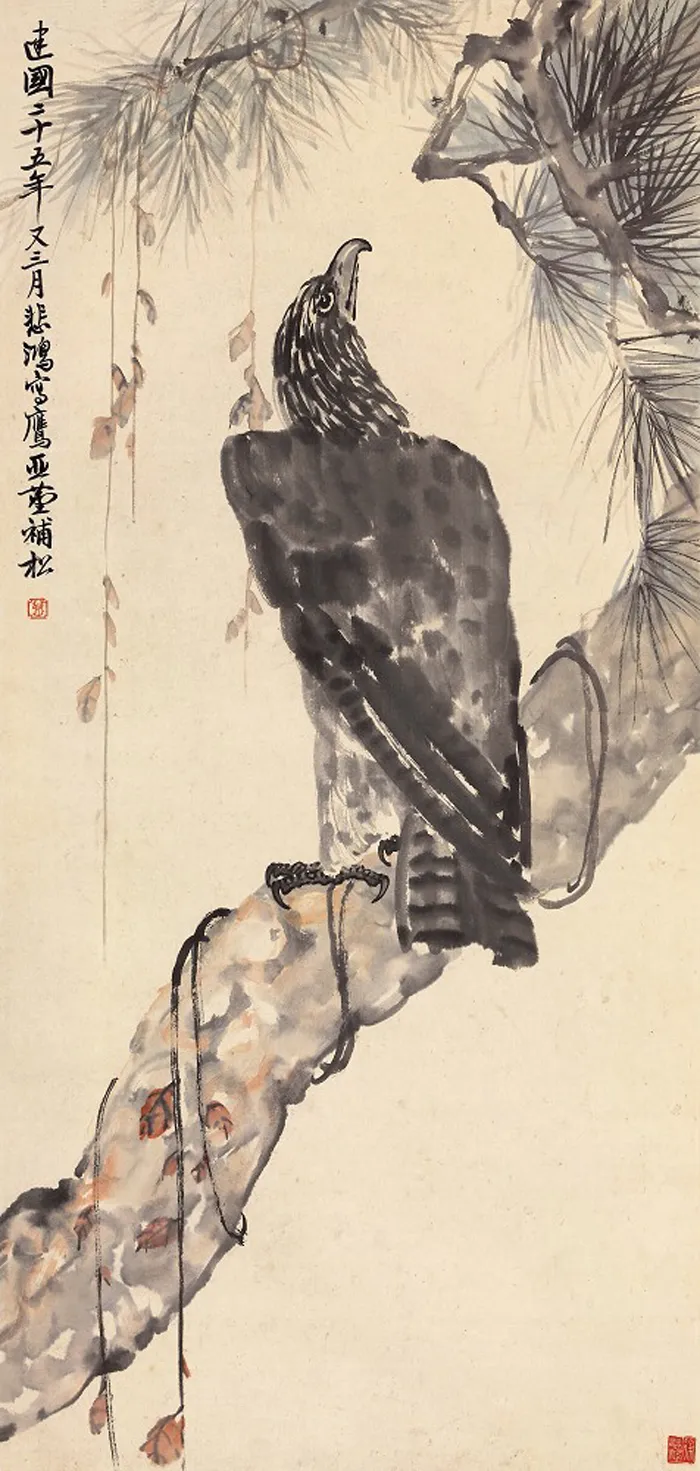
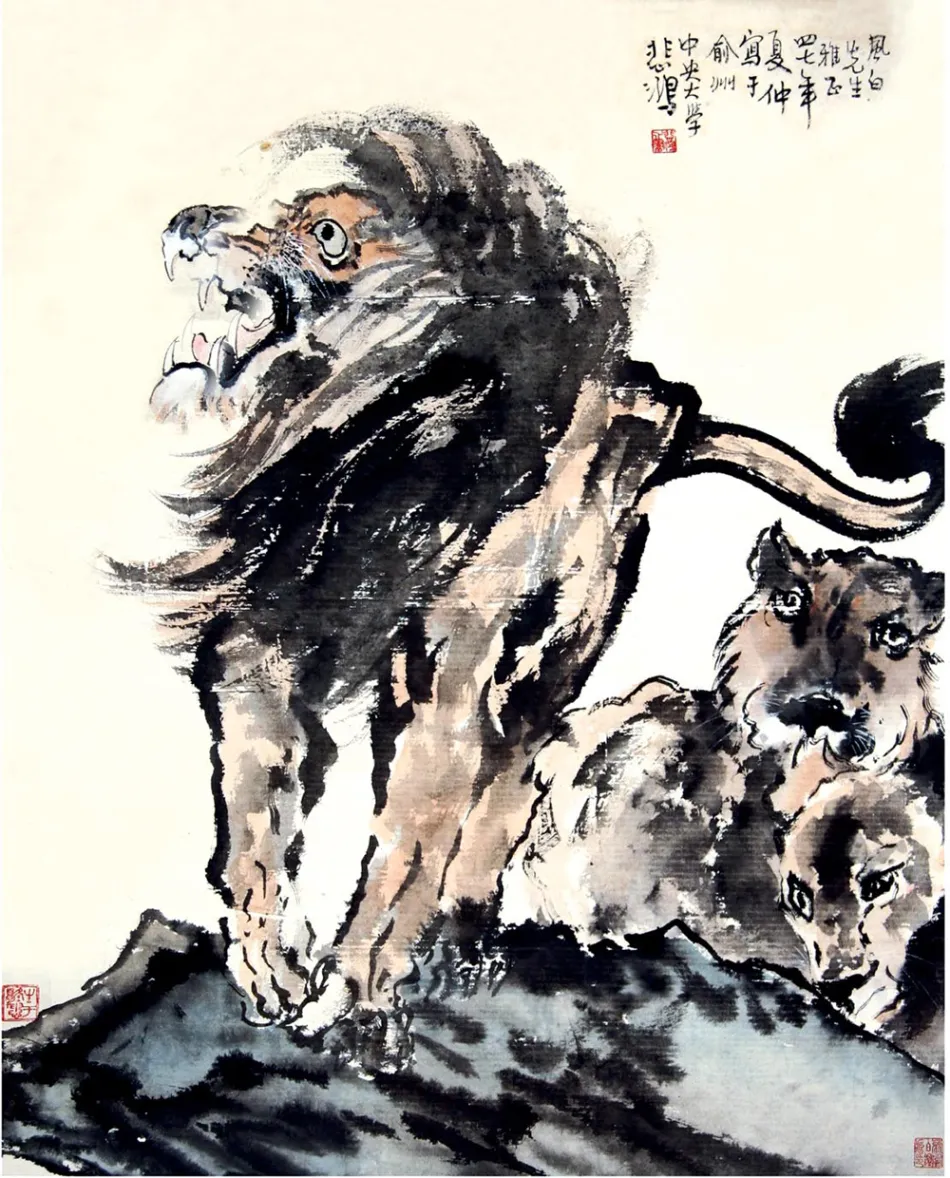
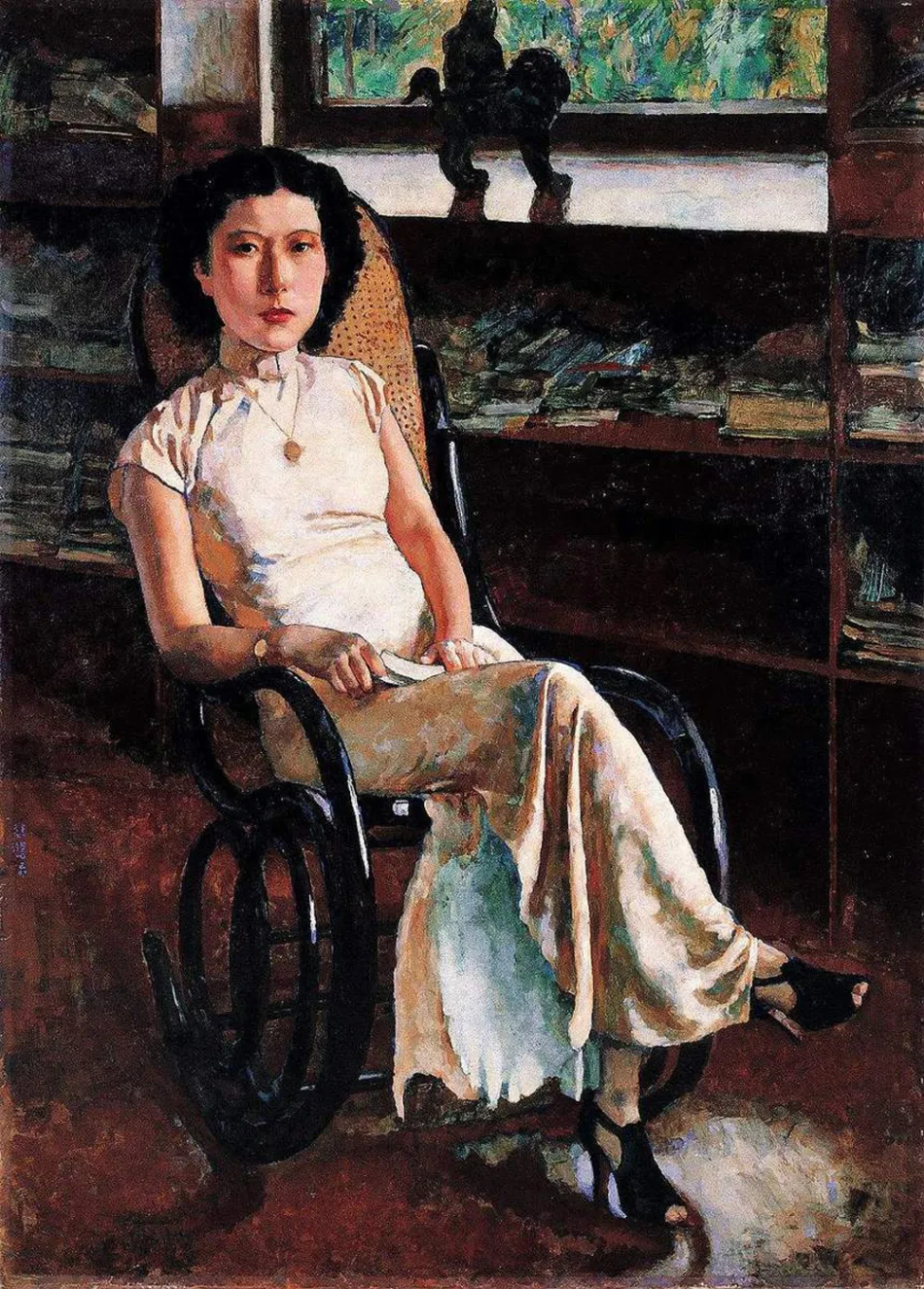
徐悲鸿,首代油画家中,最久受法兰西学院派熏陶者。留欧八载,锻炼敏慧之观感,巧于传神之造型,尤见于欧游期间所作众多人体素描。人体之学,为造型艺术之至难至重者,悲鸿之素描,取法古典,精于结构,捕其动态与节奏,线条精微,深入坚实而简约。
悲鸿之油画,得新古典至印象派色彩造型之妙,察色严谨,冷暖对比分明。其于肖像人体,大胆用紫绿之调,令画面光色交辉。造型之思,深究解剖、比例、明暗、空间关系,色彩不越形体之限,重在素描关系之展现与强调。
所谓造型,乃于平面中现三维之象,法文艺复兴之明暗、色彩、解剖、透视诸技,以视觉错觉示虚幻之真境。
徐悲鸿,丁卯年返国,自此投身丹青创作与教化之业,毕生不懈,殚精竭虑,以建中国美术教育之理论体系。其倡素描为造型之本,提“宁方毋圆,宁脏毋净,宁拙毋巧”之旨。教导门生,重全才之养,求真求美,提“尽精微,致广大”之艺理,启迪后学,垂范久远。
Among the first generation of oil painters, Xu Beihong was the one who received the most extensive formal training from the French academic school. During his eight years in Europe, he honed his keen observational skills and ability to accurately and swiftly convey his impressions, most notably in his numerous figure sketches. The study of the human form, the most crucial and challenging subject in visual arts, was a key focus of Beihong’s sketches, influenced byicism, emphasizing structural understanding and capturing the dynamics and rhythm of the human body with meticulous, profound, solid, and simple lines.
Beihong’s oil paintings benefited from the techniques of color and form between neoclassicism and impressionism. His approach to color was rigorous, emphasizing the contrast between warm and cool tones. In his portraits and figure paintings, he boldly used purple and green hues, making the colors on the canvas shimmer with light. His focus in form was on solving issues of anatomy, proportion, chiaroscuro, and spatial relationships. His use of color never exceeded the boundaries of form expression; in the relationship between form and color, he placed greater emphasis on the presentation and enhancement of sketch relationships.
In 1927, Xu Beihong returned to China and dedicated himself to art creation and education for the rest of his life, striving to establish a theoretical system for Chinese art education. He advocated that "sketching is the foundation of visual arts," proposing sketching principles such as "prefer angularity over roundness, prefer roughness over cleanliness, prefer clumsiness over cleverness." In teaching, he guided students to cultivate comprehensive knowledge, seeking truth and beauty. He proposed the artistic concept of "pursuing precision and achieving greatness," inspiring future generations and leaving a lasting legacy.
责任编辑:苗君